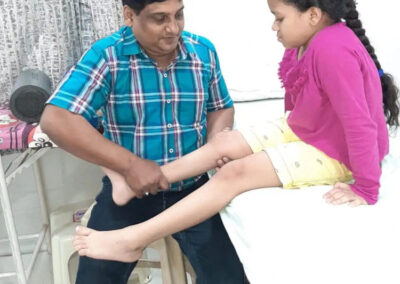The goals of post-operative rehabilitation can vary depending on the type of surgery and the individual patient’s needs. However, the primary objectives of post-operative rehabilitation generally include:
- Pain Management: Reduce post-operative pain and discomfort through appropriate exercises, modalities, and techniques.
- Inflammation Control: Minimize swelling and inflammation at the surgical site through methods like ice therapy and compression.
- Wound Healing: Promote proper wound healing and minimize the risk of infection or complications.
- Range of Motion (ROM): Restore or improve joint mobility and flexibility, preventing stiffness and contractures.
- Strength Building: Build or regain muscle strength in the affected area, surrounding muscles, and core to support the surgical site.
- Functional Restoration: Restore functional abilities, such as walking, lifting, or performing daily tasks, to pre-surgery levels or better.
- Balance and Coordination: Improve balance and coordination to reduce the risk of falls and enhance overall mobility.
- Independence: Help patients regain independence in self-care activities, such as dressing, bathing, and grooming.
- Joint Stability: Enhance joint stability and proprioception (awareness of joint position) to prevent future injuries.
- Education: Educate patients about their condition, surgery, and rehabilitation process, empowering them to take an active role in their recovery.
- Prevention: Teach patients strategies to prevent complications, such as deep vein thrombosis (DVT) or pressure ulcers.
- Psychological Well-Being: Address psychological factors like anxiety or depression related to surgery and recovery, promoting a positive mindset.
- Functional Return: Help patients return to their previous level of activity, including sports, work, or hobbies.
- Adaptation: Provide guidance on making necessary modifications to activities or environments to accommodate any long-term physical changes resulting from surgery.
- Optimize Outcomes: Maximize the overall quality of life and functional outcomes for patients following surgery.
The specific goals and progression of post-operative rehabilitation will be tailored to the patient’s condition, surgical procedure, and any preexisting health factors.
A multidisciplinary team, including surgeons, physical therapists, occupational therapists, and other healthcare professionals, may collaborate to create an individualized rehabilitation plan. The ultimate aim is to facilitate a safe and successful recovery, allowing the patient to regain as much function and independence as possible.
If you’re unsure whether physiotherapy is suitable for your specific condition, consult a qualified physiotherapist Dr. Kishan Mishra, one of the best Physiotherapist in Borivali west at Sanjeevani physiotherapy for an assessment and personalized treatment plan.




